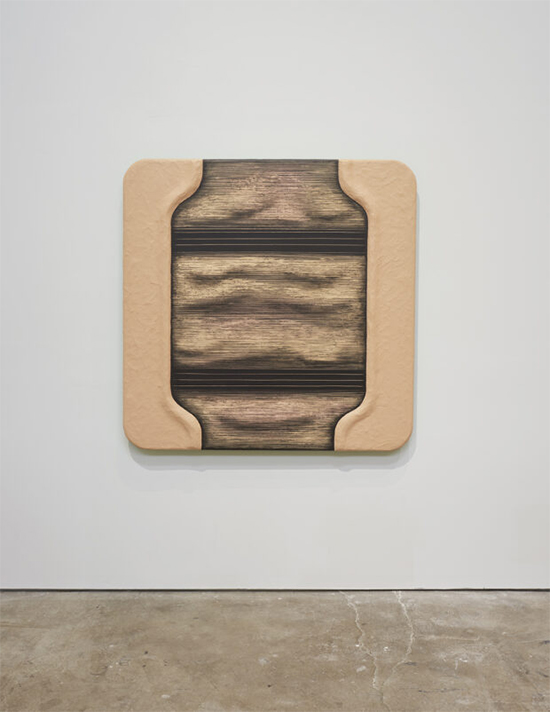
“R.E.M.”, 1986. From last year’s “Tishan Hsu: Liquid Circuit” at SculptureCenter in New York City. Made from acrylic, alkyd, and vinyl cement compound on wood. From the Marian and James H. Cohen collection.
Image courtesy of: IFA Contemporary, photographed by: Kyle Knodell
Tishan Hsu is an American contemporary artist that studies the “embodiment of technology;” in other words, the way technology impacts phenomenology (the study of consciousness and the objects of direct experience) and the effect. The New York-based artist uses many mediums for his work, Throughout his career, he has painted, sculpted, and drawn; in addition he works with computer-generated media to incorporate uncommon materials.
The artist trained as an architect at MIT; he simultaneously studied film at the Carpenter Center for the Visual Arts at Harvard University. He moved to the Big Apple in 1979 and quickly integrated into the “East Village scene.” After a couple of shows, Hsu moved toGermany. When he returned to the United States, the artist put aside his art-making and started teaching at Sarah Lawrence College in upstate New York.
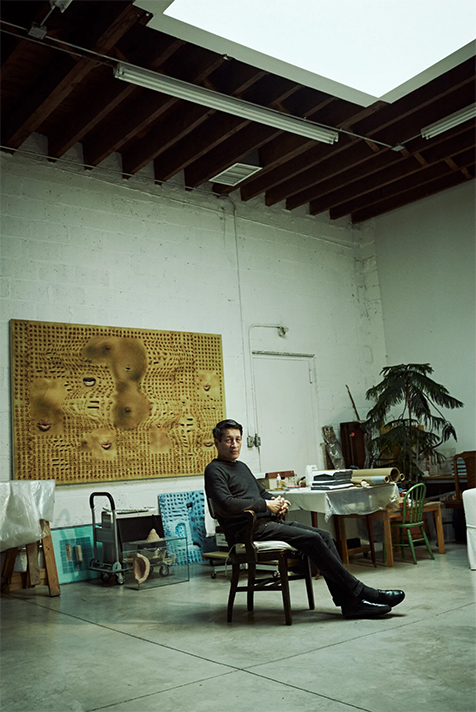
Hsu lives above his sunlit studio.
Image courtesy of: The New York Times, photographed by: Flora Hanitijo
After the late 1980s, Hsu disappeared from public view until he “resurfaced” in 2020. The timing was horrible due to the pandemic and his retrospective at the Hammer Museum in Los Angeles was forced to shut down before it even began. The retrospective, “Tishan Hsu: Liquid Circuit” covered the artist’s work from 1980 to 2005; the collection then traveled to SculptureCenter in Long Island where it is on view now.
With a reintroduction to American audiences, the retrospective is a stunning collection of twenty five years of work. He said (courtesy of an interview for The New York Times), “I remember telling people in the ’80s: ‘I don’t have a text here. The work will reveal itself.’ It just validates the unconscious.”
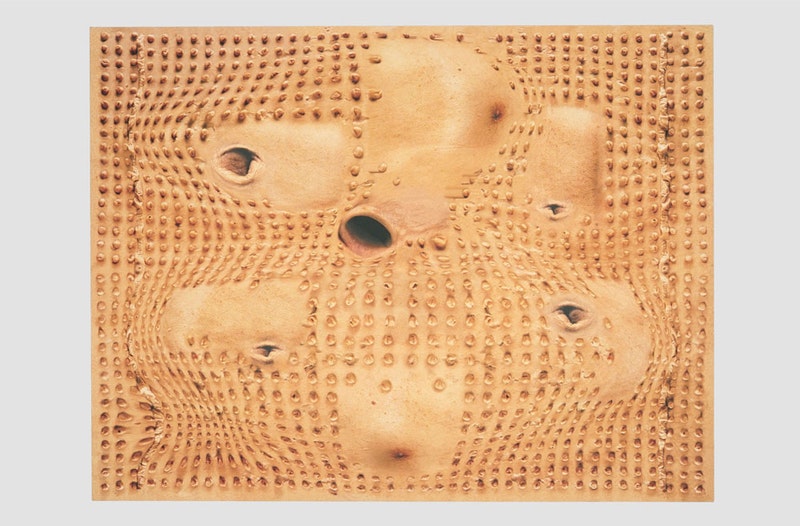
“Innies and Outies,” 2002. Archival inkjet on canvas.
Image courtesy of: The Brooklyn Rail
As technology evolved beyond word processors and rotary phones, Hsu’s paintings and sculptures started to reflect his idea that technology was slowly becoming an extension of the human body. He was convinced that this manifestation was only going to intensify over the years… and he was correct!
Observing his work, you can see modular tiles in his sculptures and his paintings mimic crude computer monitors. He did not know it at the time; but he was predicting our future. He explains (courtesy of an article by Julie Belcove for Robb Report), “At that point, art was in this camp and the technology people were in the other camp, and they were going to be ‘evil,’ undermining the humanistic world we live in. And I didn’t see it that way.” Over time, Hsu’s prediction and the “real world” converged.
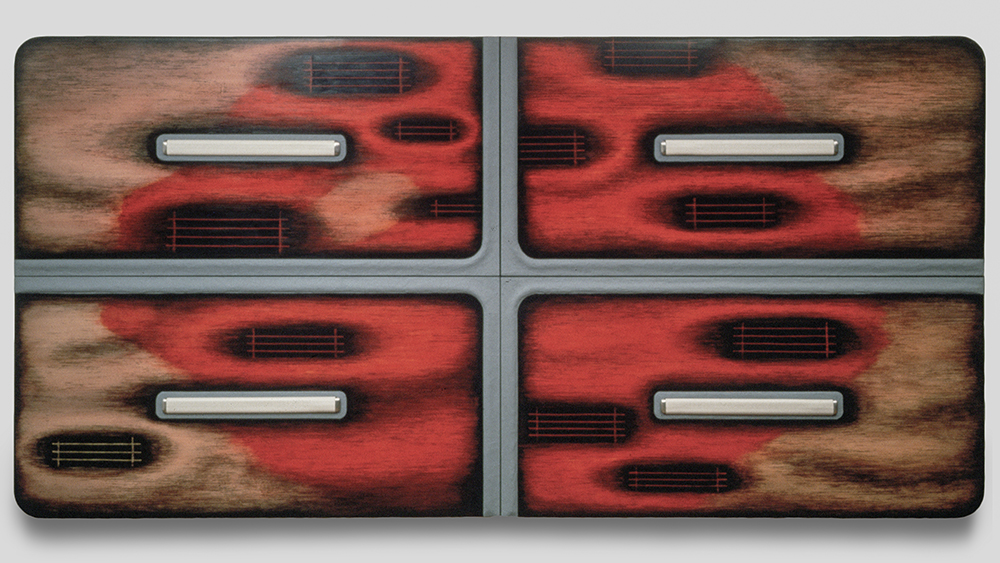
“Cell” made in 1987 is a 16-foot-wide raft of carved wood painted in fleshy tones and overlaid with rigid bars to demonstrate the feeling of looking into a microscope and seeing magnified images of human blood.
Image courtesy of: Robb Report, photographed by: Peter Ross
As he neared his graduation from graduate school for architecture, Hsu decided that he owed it to himself to give painting a real attempt. For an entire year, he lived in a barn and allowed himself only to work… and occasionally go for a walk. Discouraged with his work, he recommitted himself to architecture. However within a few short months, Hsu’s previously unformed ideas began come together and make sense.
He found an inexpensive studio and got to work. Unfortunately, Hsu quickly went through his savings and was forced to take a secretarial job as a typist. This was the artist’s first interaction with basic technology and language. For the next several years, Hsu made his art during the day and word processed documents for a law firm at night. He says, “It was perfect because I could devote my best attention all during the day, and when I was really tired and exhausted, go in and start working for them. It was also very removed. You didn’t have to talk to anyone. You could just go in there and bliss out. And actually still think about my [art].”
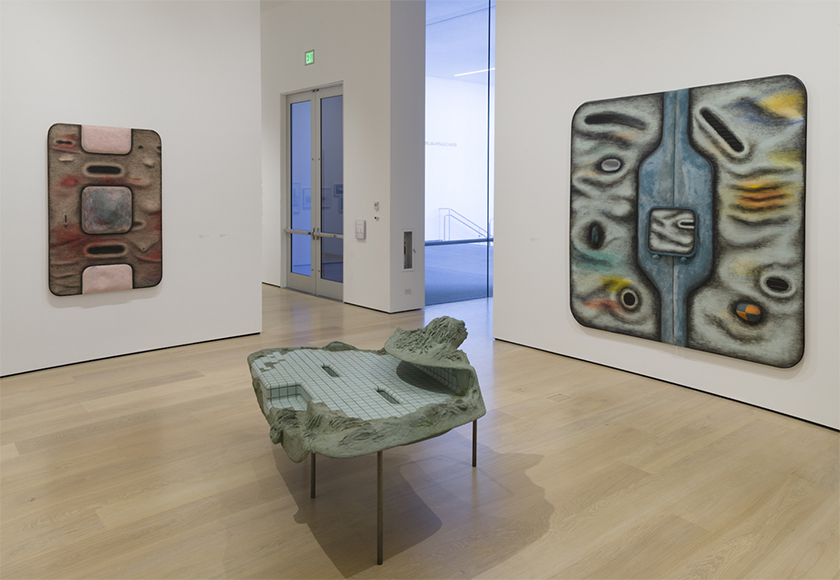
Installation of “Tishan Hsu: Liquid Circuit” at Los Angeles’ Hammer Gallery.
Image courtesy of: Hyperallergic
For more than twenty years, while Hsu taught college students, he continued to make his art. His ideas, even today, are all part of a continuum. Thus, a “new piece” is not really a first step, it is actually part of an ongoing process that continues to evolve.
Hsu has been a quiet observer of our changing world and our increasingly sophisticated interactions with technology. Increasingly, technology has become a dominant part of our culture; this does not seem likely to change. It is almost as though there is a new set of values and rules that have been written which take into account how big a part of our lives technology has become. Technology is omnipresent, this we know. However what is unclear is how Hsu was able to predict this decades ago?